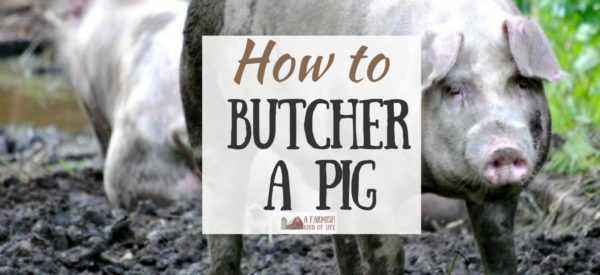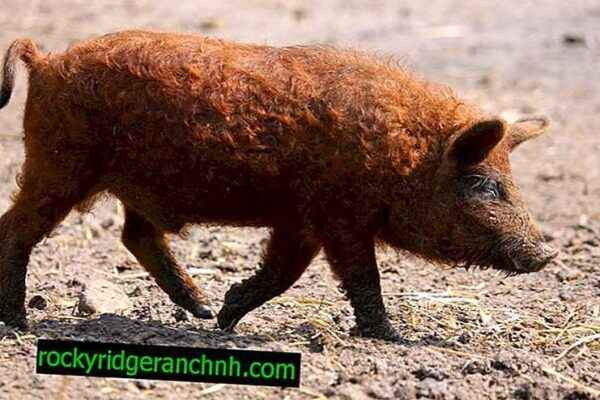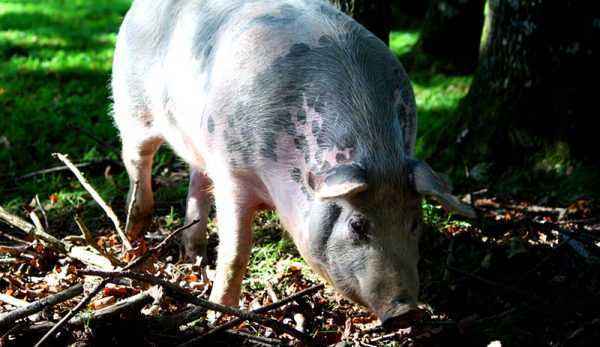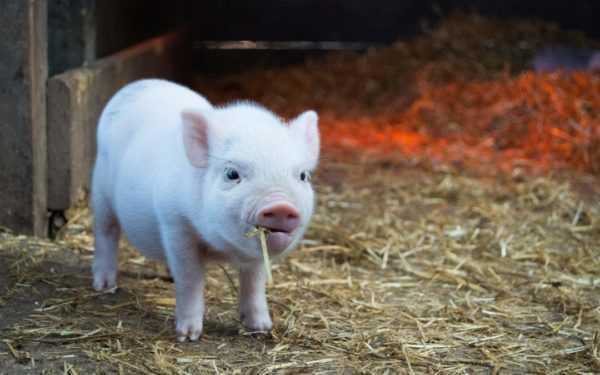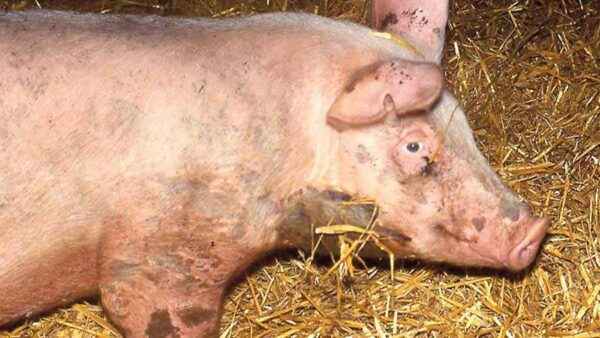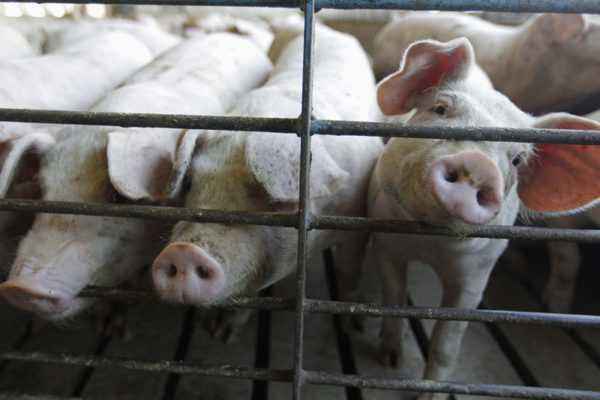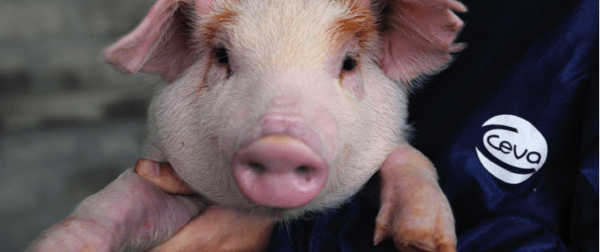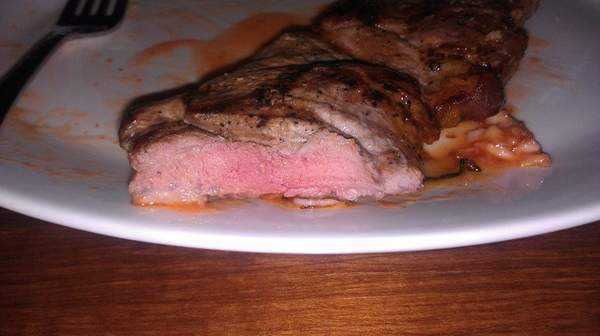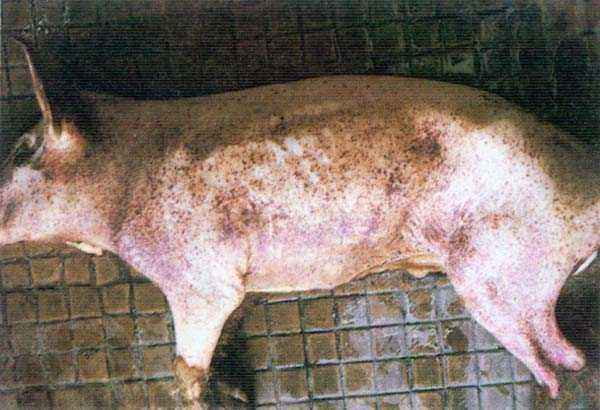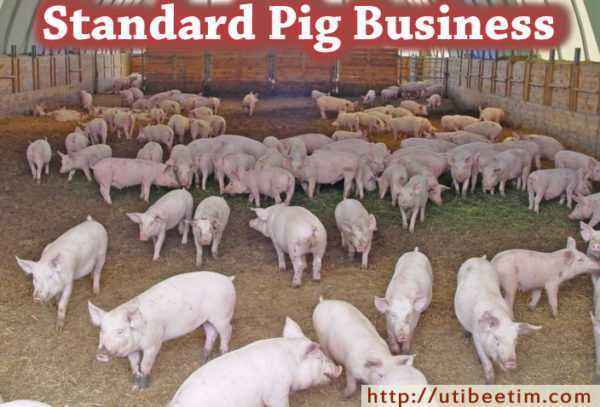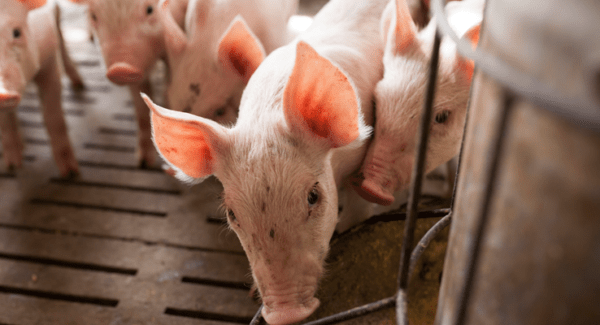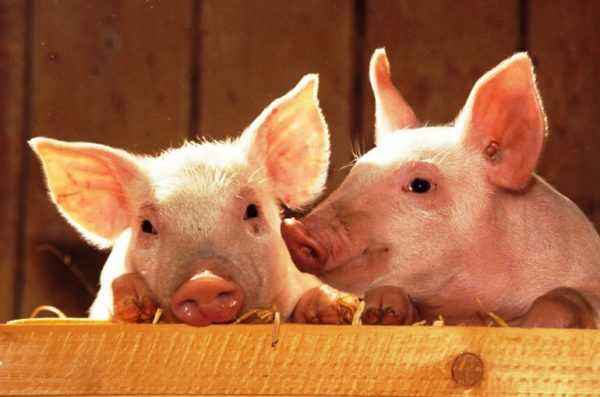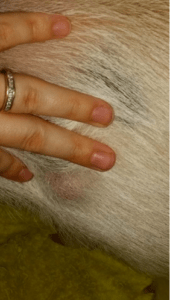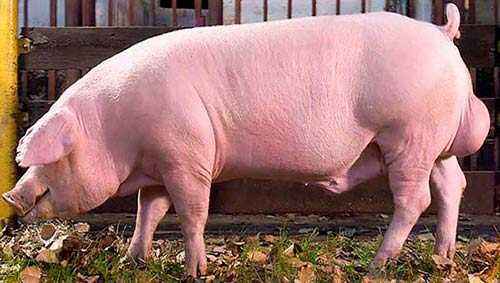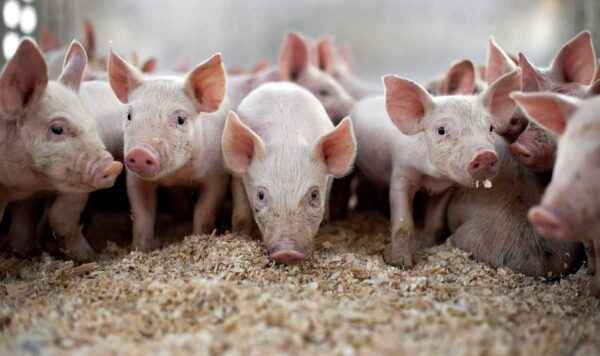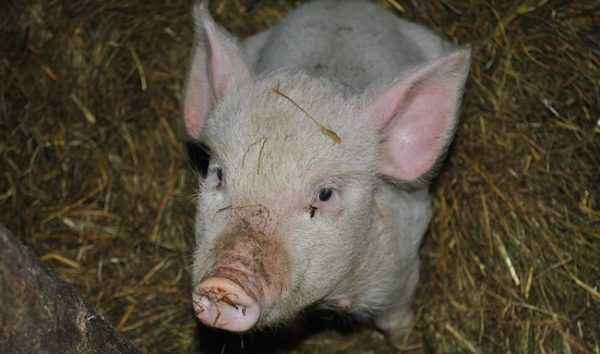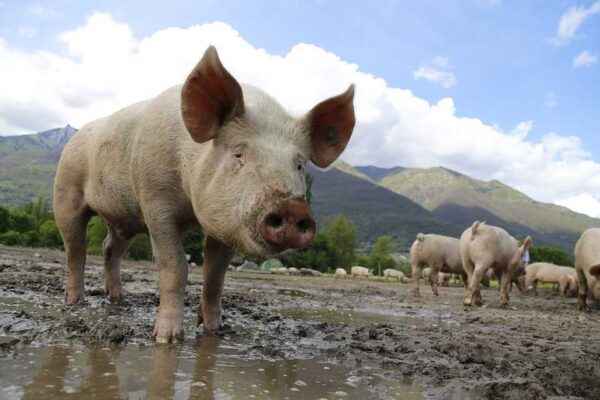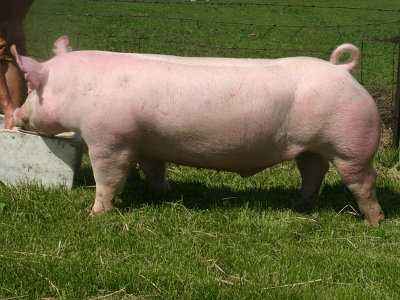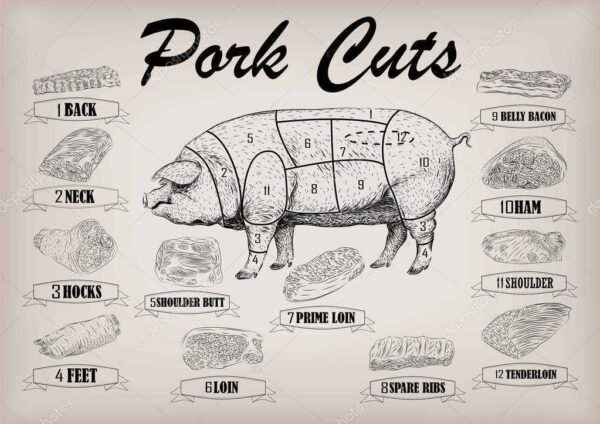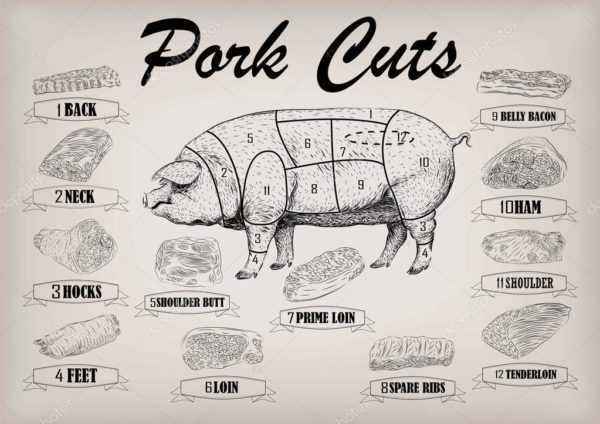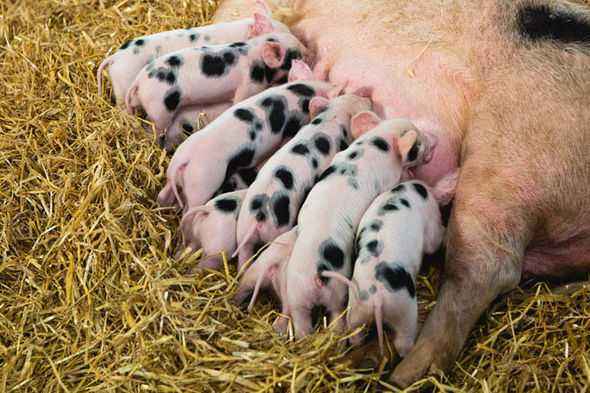Pigs have been kept as farm animals since ancient times. Due to the high calorie content of meat and sebaceous layer, they are often bred both by large enterprises and private livestock breeders. Like most domestic animals, artiodactyls are susceptible to various parasite infections.
- Species of nematodes in pigs
- Ways of infecting pigs with parasites
- Symptoms of the disease of pig worms
- Drug treatment for helminth infestation in pigs
- How give animals anthelmintic drugs
- Alternative methods for controlling helminths in pigs
- Prevention of ascariasis in pigs
- Conclusion

Worms in pigs
Among the harmful organisms in the first place worms in pigs can appear for various reasons, but most often this happens due to violation of sanitary standards, poor feed and lack of prevention. Both medications and alternative methods are used in the treatment of ascariasis.
Species of nematodes in pigs
Before starting treatment, it is necessary to determine which farm pigs have worms. Some of them have special signs of being in the body and are excreted by individual drugs. The most famous species of nematodes in artiodactyls are the following:
- Pork ascaris. These are round white worms 40 cm long. They affect the gastrointestinal tract and nasopharynx of the animal.
- Genus Globocephalus. These are smooth worms of no more than 8 mm in length.Attach to the walls of the intestines, using pork blood.
- Genus Gnathostoma. Round worms of brown color 10 mm long. Artiodactyls enter the body after eating other carriers: frogs, fish or snakes. The habitat is the stomach.
- Genus Oesophagostomum. Roundworms up to 20 mm in size. They affect the digestive system, creating nodule growths on the walls of the stomach and intestines. These parasites are deadly to the animal if they enter the liver.
- Pork tapeworm is a tapeworm that leaves cysts in the internal organs of the artiodactyl. In pigs, helminth lives only in the larval stage.
Ways of infecting pigs with parasites
Worms in pigs and piglets have common transmission routes. The most common cause of infection is a violation of the rules for keeping farm animals. Among them are:
- herd content in a dirty stable;
- poor-quality disinfection of drinking bowls and feeders;
- a large number of artiodactyls in cramped pens;
- poor-quality food;
- lack of anthelmintic prophylaxis.
Favorable habitats for worms are feces of adult animals, dirty water or grass on a pasture. Most often, parasites enter the artiodactyl organism in the form of eggs, which are called cysts.Ascaris eggs do not pose a danger to pigs at rest, however, if cysts are in the environment they need to develop, then worms may appear from them very soon.
First of all, such parasites are dangerous for piglets and pregnant sows. Young animals do not have strong immunity, unlike adults, and worms can cause various diseases of the gastrointestinal tract. Worms in piglets without surgical treatment can be fatal.
A sow is also dangerous for milk feeding babies, as the worms can enter the body of the young through the mother’s milk. The female undergoes necessarily preventive treatment a month before the birth.
Also, worms can enter the farm through newly acquired individuals. In the first week, new artiodactyls must be kept in a quarantine zone. In addition to checking for other diseases, all pigs are treated for worms. The procedure is repeated 1.5 months after the purchase of the animals.
Symptoms of the disease of pigs worms
First of all, infected individuals gain weight and eat little. Worms in pigs and piglets have the following symptoms:
- in artiodactyls coughing and wheezing appear;
- the body temperature rises;
- the animal rapidly loses weight;
- pigs begin to itch and do not come into contact with the general herd;
- some individuals increase the level of aggression.
Ascaris is dangerous because the first symptom is often mistaken for a cold. This is due to the fact that parasites very quickly begin to lay down cysts that move along the nasopharynx and throat. Because of this, the treatment of the disease slows down significantly, which gives roundworms time to multiply throughout the body. When removing the crib, you should look at the manure for worms: roundworms have a long body shape and white color. Such worms are very visible among animal feces. Beginners in animal husbandry are encouraged to see photos of different types of parasites to determine the degree of danger to the animal.
Symptoms of helminth or roundworm infection include the pig’s nervous behavior. Potential infected individuals should be checked because many types of helminths do not remain in animal feces.
Some parasites increase appetite, but the artiodactyl continues to lose weight. Thirst for pigs may also increase.
Signs of ascariasis are often poorly expressed in the early stages of the disease, therefore disease prevention should be carried out.
Drug treatment for helminthic infestation in pigs
Before treating pigs and piglets for glis s at home, consult your veterinary professional. Depending on the type of nematode preparations may vary. Also, if the wrong dosage of medication can disrupt the microflora of the stomach of young animals. In the first place, infected animals should be removed from healthy animals. If piglets are infected, then all litter must be treated. There are several common drugs that can remove ascaris and helminths:
- Sodium silicofluoride;
- Hygrovetin;
- Nilferm;
- Ivermek ;
- Alben.
The most famous drug against roundworm is sodium silicofluoride.The medicinal powder is mixed with cereal feed and given to artiodactyls during each meal.
How to give anthelmintic preparations to animals
The dosage of the drug depends on the weight of the animal.
The food with the medicine is poured into the feeders, after having previously been treated with disinfectants. Worms begin to die and go out naturally on the second day after taking the drug. Gastrointestinal cleansing occurs within a week. The largest number of parasites leaves on the fourth day. Sodium silicofluoride should not be given to calves on milk feeding. It is also forbidden to treat them with a pregnant sow. This can lead to miscarriage and diseases of the reproductive system.
Hygrovethin is a dietary supplement to conventional feed that helps remove worms and cysts. This worm remedy is for pigs older than 2 months. A powder supplement is mixed with conventional concentrates. Treatment lasts for 2-3 months until the worms completely leave. This preparation is given to young animals for one month.
Ivermek and Nilverm are worm remedies for treating suckling piglets. A medicine is a vaccine that is administered to calves subcutaneously. Injections should be given once a day.
For the treatment of suckling pigs, you can also use tablets against worms Alben. This medication is for babies under 5 months old.The dosage also depends on the weight of the individual. To make it easier for the calves to take the medicine, you can crush the tablet to powder and give it in the milk mixture. Youngsters are drunk until the last signs of roundworm disappear.
Folk methods for fighting helminths in pigs
You can get rid of parasites at home using folk remedies.
A popular plant-based product for controlling worms is garlic. It should be crushed and mixed with concentrates. Garlic should be dosed: pigs will not eat too spicy food.
Also used for treatment is a folk remedy such as tansy. This plant in summer is given to artiodactyls in unlimited quantities. Tansy is mixed with other herbs and fed to pigs as green food. If the symptoms of ascariasis were found in piglets, then they can be drunk with a weak decoction from this plant or give a teaspoon of dry grass. The duration of treatment depends on how many nematodes in artiodactyls depart. It should be soldered with a decoction of individuals one more week after the last sign of parasites.
Prevention of ascaridosis in pigs
Worms can enter the artiodactyl organism during grazing, therefore the preventive treatment of ascaris is a very important event. To do this, the entire herd is necessarily sealed with medications.It is also recommended to use garlic broth or infusion on tansy. Deworming should take place twice a year when the season changes.
To reduce the risk of cloven-hoofed animals being infected with helminths, the following sanitary standards must be observed:
- The pens should be cleaned daily and treated with disinfectants 2 times a week. . The litter in the pens is changed every day.
- Before each feed, the containers should be cleaned of food and manure leftovers.
- Once every 10 days, pigs and drinkers are treated with boiling water.
- Corrals should be regularly bleached with lime and treated with a liquor solution.
Contaminated manure should be cleaned with a mask and work clothes, as pork roundworms can infect humans. Such feces cannot be used to fertilize plants, so the manure is burned.
If the worms were discovered during the slaughter of the animal, the meat is processed depending on the type of nematodes. In some cases, partially pork can be eaten, but internal organs are disposed of.
Pigs that have not undergone mandatory deworming are not allowed to sell or breed. Before selling the final product, the farmer must have confirmation from a veterinarian that the meat is suitable for consumption. Any symptoms or signs of roundworm infection can cause restrictions on the farm.
Conclusion
Ascaridosis is a common disease in farm animals. Most often, parasites infect pigs due to the uncleanliness of artiodactyls. Ascaris eggs enter the body of animals in different ways. The reason may be a violation of sanitary norms of maintenance, poor-quality feed or grass on a pasture.
Signs of infection are difficult to identify at the first stages of the disease, so the entire population must undergo mandatory preventive treatment. The meat of the treated animals can be eaten, but if worms were found in the body of the pig after slaughter, then this carcass is disposed of in most cases.
